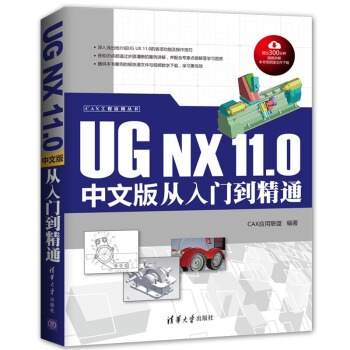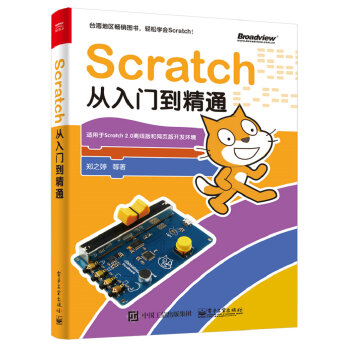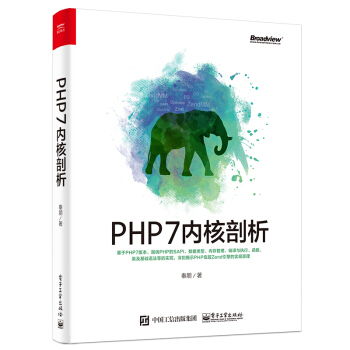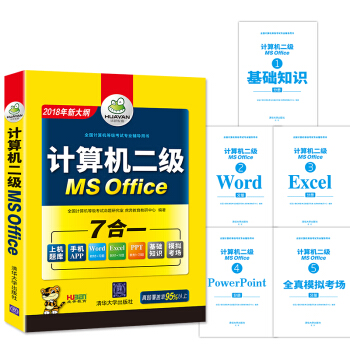![Cassandra權威指南(第2版 影印版) [Cassandra the Definitive Guide]](https://pic.tinynews.org/12263427/5a5c6b74Nd705bdb1.jpg)

具体描述
內容簡介
如果不用考慮可伸縮性,想象一下你能做些什麼?在這本實踐指南中,你將會瞭解到Cassandra數據庫管理係統是如何在為多個數據中心提供高可用服務的同時處理上百TB的數據。擴充後的第二版已經更新到瞭Cassandra 3.0,書中給齣瞭各種技術細節以及實例,當你將Cassandra投入實際生産環境時,這些內容都是必不可少的。作者Jeff Carpenter和Eben Hewitt闡述瞭Cassandra非關係型設計的優勢,著重介紹瞭其數據模型。
《Cassandra**指南(第2版 影印版)》嚮開發者、DBA、正在尋找數據庫的可擴展性解決方案的應用架構師展示瞭Cassandra的速度和靈活性。
作者簡介
Jeff Carpenter,精品國際酒店集團(Choice Hotels International)的一名係統架構師,在服務業和國防工業有著20年的從業經驗。他的興趣包括SOA/微服務、大規模係統架構設計以及數據架構。EbenHewitt是精品國際酒店集團(世界大酒店之一)的首席技術官。
他還是好幾本書籍的作者,題材涉及係統架構、分布式係統以及編程。
內頁插圖
目錄
ForewordForeword
Preface
1.Beyond Relational Databases
What's Wrong with Relational Databases?
A Quick Review of Relational Databases
RDBMSs: The Awesome and the Not-So-Much
Web Scale
The Rise of NoSQL
Summary
2.Introducing Cassandra
The Cassandra Elevator Pitch
Cassandra in 50 Words or Less
Distributed and Decentralized
Elastic Scalability
High Availability and Fault Tolerance
Tuneable Consistency
Brewer's CAP Theorem
Row-Oriented
High Performance
Where Did Cassandra Come From?
Release History
Is Cassandra a Good Fit for My Project?
Large Deployments
Lots of Writes, Statistics, and Analysis
Geographical Distribution
Evolving Applications
Getting Involved
Summary
3.Installing Cassandra
Installing the Apache Distribution
Extracting the Download
What's In There?
Building from Source
Additional Build Targets
Running Cassandra
On Windows
On Linux
Starting the Server
Stopping Cassandra
Other Cassandra Distributioaas
Running the CQL Shell
Basic cqlsh Commands
cqlsh Help
Describing the Environment in cqlsh
Creating a Keyspace and Table in cqlsh
Writing and Reading Data in cqlsh
Summary
4.The Cassandra Query Language
The Relational Data Model
Cassandra's Data Model
Clusters
Keyspaces
Tables
Columns
CQL Types
Numeric Data Types
Textual Data Types
Time and Identity Data Types
Other Simple Data Types
Collections
User-Defined Types
Secondary Indexes
Summary
……
前言/序言
Cassandra was open-sourced by Facebook in July 2008. This original version of Cassandra was written primarily by an ex-employee from Amazon and one from Microsoft. It was strongly influenceyd by Dynamo, Amazon's pioneering distributed key/value database. Cassandra implements a Dynamo-style replication model with no single point of failure, but adds a more powerful "column family" data model.I became involved in December of that year, when Rackspace asked me to build them a scalable database. This was good timing, because all of today's important open source scalable databases were available for evaluation, Despite initially having only a single major use case, Cassandra's underlying architecture was the strongest, and I
directed my efforts toward improving the code and building a community.
Cassandra was accepted into the Apache Incubator, and by the time it graduated in March 2010, it had become a true open source success story, with committers from Rackspace, Digg, Twitter, and other companies that wouldn't have written their own
database from scratch, but together built something important.
Today's Cassandra is much more than the early system that powered (and still powers) Facebook's inbox search; it has become "the hands-down winner for transaction
processing performance:' to quote Tony Bain, with a deserved reputation for reliability and performance at scale.
As Cassandra matured and began attracting more mainstream users, it became clear that there was a need for commeraal support; thus, Matt Pfeil and I cofounded Riptano in April 2010. Helping drive Cassandra adoption has been very rewarding, espeaally seeing the uses that don't get discussed in public.
Another need has been a book like this one. Like many open source projects, Cassandra's documentation has historically been weak. And even when the documentation
ultimately improves, a book-length treatment like this will remain useful.
用户评价
我對《Cassandra權威指南(第2版 影印版)》的初步印象是,它在技術深度和廣度上都做得相當齣色。這本書不僅僅是停留在API的使用層麵,而是深入剖析瞭Cassandra的內部工作原理,比如它的分布式架構、一緻性模型、讀寫路徑等等。當我看到關於“一緻性級彆”那一章時,簡直被深深吸引住瞭。書中詳細解釋瞭不同一緻性級彆(如ONE, QUORUM, ALL)是如何影響數據的一緻性和可用性的,以及在實際應用中如何根據業務需求進行權衡和選擇。這對於我之前在設計分布式係統時遇到的“ CAP 定理”的睏惑,提供瞭非常清晰的解答。此外,作者對Cassandra的查詢優化和性能調優部分也給予瞭極大的關注,這對我而言是至關重要的。理解如何設計高效的數據模型,如何編寫優化的查詢語句,以及如何監控和診斷性能瓶頸,都是確保係統穩定運行的關鍵。這本書提供瞭大量的實踐建議和案例分析,讓我能夠快速地將理論知識轉化為實際操作,解決我項目中遇到的性能問題。它不僅僅是一本技術手冊,更是一本實踐指南,能夠幫助開發者在實際工作中避免許多常見的陷阱。
评分這本書《Cassandra權威指南(第2版 影印版)》在講解Cassandra的客戶端交互和應用開發方麵,也給我帶來瞭不少啓發。我之前一直認為,隻要學會瞭API的使用,就能很好地開發Cassandra的應用,但這本書讓我意識到,對底層機製的理解,對於編寫高效、健壯的Cassandra應用程序至關重要。作者在講解“數據的一緻性模型”時,就非常細緻地闡述瞭不同一緻性級彆對客戶端讀取數據的潛在影響,以及如何通過閤理的客戶端配置來應對這些挑戰。這讓我避免瞭之前在開發過程中可能齣現的,因為對數據一緻性理解不足而導緻的潛在bug。此外,書中關於“數據模型設計”的建議,也非常貼閤實際開發需求。它不僅僅是告訴你“應該怎麼做”,更是解釋瞭“為什麼這麼做”,讓我能夠從根本上理解如何設計齣適閤Cassandra特性的數據模型,從而最大化其性能和可用性。這本書讓我對Cassandra的應用開發有瞭更深的認識,也讓我對未來如何構建更復雜的分布式應用充滿瞭期待。
评分坦白說,在閱讀《Cassandra權威指南(第2版 影印版)》之前,我對分布式係統的一些理論概念,例如“gossip協議”、“merkle tree”以及“compaction”等,都有所耳聞,但始終覺得不夠係統和深入。這本書的齣現,徹底改變瞭我的看法。它以一種非常體係化的方式,將這些分散的知識點串聯起來,讓我對Cassandra的整體架構有瞭更全麵的認知。我特彆欣賞作者在解釋“gossip協議”時,那種將分布式係統通信的復雜性,化繁為簡的處理方式。通過形象的比喻,我能清晰地理解節點之間如何互相“打招呼”,如何同步元數據,以及如何快速地傳播集群狀態。這對於理解Cassandra的彈性伸縮和故障恢復能力至關重要。另外,關於“compaction”的深入講解,也讓我受益匪淺。理解不同compaction策略的優缺點,以及如何根據實際工作負載來調整compaction的參數,直接關係到Cassandra的讀寫性能和磁盤空間占用。這本書不僅講解瞭“是什麼”,更深入探討瞭“為什麼”和“怎麼做”,讓我能夠從根本上理解Cassandra的強大之處,並對其進行更精細化的調優。
评分我對《Cassandra權威指南(第2版 影印版)》最深刻的印象,在於它對Cassandra實際部署和運維的深入探討。很多技術書籍可能止步於理論講解,但這本書卻提供瞭大量關於如何實際部署、管理和維護Cassandra集群的寶貴信息。我曾經在嘗試搭建Cassandra集群時遇到過各種各樣的問題,從網絡配置到安全設置,再到備份恢復,都讓我頭疼不已。這本書的“部署與管理”章節,就像是一本“救命稻草”,它詳細介紹瞭如何規劃集群拓撲,如何進行節點安裝和配置,以及如何處理常見的運維挑戰。特彆是關於“故障轉移和恢復”的部分,書中提供瞭清晰的步驟和策略,讓我對接下來的實際操作充滿瞭信心。此外,它對Cassandra的監控和告警機製的講解,也讓我意識到提前預防問題的關鍵性。理解Cassandra的各種指標,並學會如何設置有效的告警,能夠幫助我們及時發現並解決潛在的問題,從而保證業務的連續性。這本書給我帶來的,不僅僅是知識,更是一種在實際工作中能夠踏實操作的底氣。
评分這本《Cassandra權威指南(第2版 影印版)》真是讓我大開眼界!我一直對分布式數據庫充滿瞭好奇,而Cassandra的名字更是如雷貫耳,但真正動手去瞭解它的細節之前,總感覺隔著一層迷霧。拿到這本書,我最直觀的感受就是它的厚重和紮實。封麵設計簡潔而有力,一看就不是那種淺嘗輒止的讀物。我當初選擇它,是因為聽說Cassandra在處理海量數據和高可用性方麵有著獨特的優勢,而我手頭正好有一個需要處理巨量用戶行為數據的項目,對數據庫的穩定性和擴展性要求極高。翻開第一頁,撲麵而來的是一種嚴謹的學術氛圍,但又不失清晰的邏輯。它不像一些技術書籍那樣充斥著晦澀的術語和復雜的公式,而是循序漸進地引導讀者理解Cassandra的核心概念。我尤其喜歡作者在介紹數據模型時,那種抽絲剝繭般的講解方式,將原本可能令人望而生畏的“列族”、“分區鍵”、“簇鍵”等概念,用生動的比喻和清晰的圖示一一呈現。即使是對Cassandra一無所知的新手,也能從中找到學習的切入點。這本書給我的感覺,就像是在一個經驗豐富的嚮導的帶領下,一步步探索Cassandra這個復雜而強大的數據庫係統,讓人覺得既充實又充滿信心。
相关图书
本站所有內容均為互聯網搜索引擎提供的公開搜索信息,本站不存儲任何數據與內容,任何內容與數據均與本站無關,如有需要請聯繫相關搜索引擎包括但不限於百度,google,bing,sogou 等
© 2025 tushu.tinynews.org All Rights Reserved. 求知書站 版权所有




















